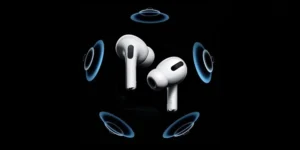Hardy Tech News
Stay ahead with HardyNews! Explore the latest tech innovations, gadget reviews, and in-depth coverage of emerging technologies shaping the future.

Our Top Picks
M4 칩이 탑재된 새로운 MacBook Air 모델은 iPhone SE 4 및 iPad 11보다 ‘이른’ 출시될 것으로 예상됩니다.
steve smith 10 months ago
Apple has always had a knack for surprising its customers with sleek and powerful new devices, and it seems the...
AI가 명품 시계 산업의 미래를 형성하는 방법
웨어러블 기술의 미래: 트렌드와 혁신
Latest Guide
웨어러블 기술의 미래: 트렌드와 혁신
Wearable technology has come a long way, from the first fitness trackers to the sleek and multifunctional smartwatches and augmented reality (AR) glasses of today. As we move into a new era of innovation, wearable tech is expected to evolve in ways that will transform our daily lives, from enhancing health and fitness to improving connectivity and productivity. In this article, we will explore the future of wearable technology, highlighting the trends and innovations that will shape the next generation of devices. 1. Health and Wellness Integration Advanced Health Monitoring Health and wellness have always been at the forefront of wearable technology, but the next generation of devices will bring even more sophisticated capabilities. While wearables like Apple Watch and Fitbit already track basic metrics such as heart rate, sleep, and activity levels, future devices will go far beyond. Wearable Diagnostics In the future, wearables could become diagnostic tools. Devices might integrate with healthcare systems to provide in-depth health assessments, identifying potential risks and suggesting lifestyle adjustments. 2. Augmented Reality (AR) and Virtual Reality (VR) AR Glasses While companies like Meta and Microsoft have already introduced AR glasses, the technology is still in its early stages. In the coming years, expect to see AR glasses that offer seamless integration with everyday life. These glasses could display real-time information on everything from navigation directions to text messages. Key developments in AR for wearables include: VR for Fitness and Entertainment As VR technology advances, we will likely see wearables integrated with VR headsets for more immersive experiences in gaming, education, and fitness. These devices will offer deeper immersion in virtual worlds, allowing for hands-on training, simulations, and entertainment. 3. Fashion and Personalization Smart Fabrics The future of wearables won’t just be about gadgets; it will also involve smart clothing. Smart fabrics and textiles will embed sensors directly into clothing, offering a host of features like body temperature regulation, muscle recovery support, and even heart rate tracking. For example: Customization Through AI Future wearables will feature even more personalization, powered by AI. Devices will adapt to a user’s behavior and preferences, offering insights into health, fitness, and productivity that are tailored to the individual. AI will learn from the user’s daily routines, adapting features and notifications accordingly. 4. Improved Connectivity 5G and Beyond As 5G networks continue to expand, wearables will become even more connected. High-speed internet and ultra-low latency will make it easier for devices to interact with each other and access cloud-based services in real time. This means wearables will be able to stream high-quality media, deliver real-time data analysis, and even support remote health monitoring for healthcare professionals. Advanced Biometric Authentication The future of wearables will likely feature more advanced biometric authentication methods. Smartwatches, rings, or even glasses could incorporate facial recognition, voice recognition, and fingerprint scanning to offer enhanced security for payments, digital access, and personal data. 5. Energy Efficiency and Sustainability Battery Life and Charging Innovations One of the biggest challenges for wearable tech has been battery life. Future devices will likely feature longer battery life and faster charging capabilities, possibly through more efficient solar charging or wireless charging. This could make wearables more convenient and reliable, reducing the need for frequent charging. Sustainability With growing concerns about e-waste, the future of wearable technology will focus on sustainable materials and eco-friendly designs. Expect to see wearables made from recyclable and biodegradable materials, reducing their environmental impact. 6. Security and Privacy As wearables collect increasingly sensitive personal data, such as health metrics and location information, privacy and data security will become even more important. Future wearables will likely come equipped with advanced encryption and privacy-focused features to ensure that personal data is protected at all times. Conclusion: The Future of Wearable Technology The future of wearable technology is incredibly promising, with advancements in health monitoring, AR/VR, fashion, and connectivity all on the horizon. As the industry continues to innovate, we can expect wearables to become not only essential tools for daily living but also extensions of our own capabilities. The next generation of wearables will offer more than just convenience; they will help us monitor our health, improve productivity, and engage with the world in entirely new ways. Whether you’re a fitness enthusiast, tech lover, or simply someone looking for greater convenience, the future of wearable technology is something to look forward to.
Latest Posts
Unable to fetch RSS feed. Please try again later.


















